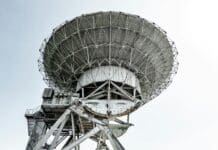
This post is also available in:
 עברית (Hebrew)
עברית (Hebrew)
Russia has ramped up its military presence in the eastern Mediterranean, conducting a series of naval and air force drills that featured the launch of hypersonic missiles. The exercises, which took place in early December, come at a time of growing instability in Syria, where President Bashar al-Assad’s forces are battling Islamist rebel forces.
On December 3, Russia’s Ministry of Defense announced that during the combined exercise of its Navy and Air Force, Russian vessels fired advanced hypersonic missiles, including the Zirkon (Tsirkon) missile and Kalibr cruise missiles, in the eastern Mediterranean. These tests demonstrate Russia’s continued military involvement in the region, where it maintains a naval base in Tartus, Syria. Additionally, a launch of an Onyx cruise missile from the Mediterranean coast was also confirmed. The drills were marked by the participation of over 1,000 personnel, 10 naval vessels, and 24 aircraft, highlighting Russia’s increased military presence in the area.
The Zirkon, Russia’s state-of-the-art hypersonic missile, is capable of speeds up to Mach 9 (around 11,000 km/h) and has a range of over 1000 km. It is designed for both anti-ship and land-attack purposes, with its hypersonic speed making it difficult to intercept. Similarly, the Kalibr missile, an older yet highly effective weapon, has been used extensively in the Syrian conflict, with variants capable of targeting both land and maritime objectives. The Onyx missile, also known as the Yakhont, is a versatile and powerful cruise missile. It has a maximum range of 600-800 km, depending on the variant, and can reach speeds of up to Mach 2.9 (3180 km/h).
These missile tests are occurring amidst a growing sense of urgency in Syria. Russia has been a critical ally of Assad since the Syrian civil war’s early days, providing military support that has helped stabilize his regime. The timing of these drills underscores Russia’s strategic interest in maintaining influence over Syria, where it continues to fight both internal rebel forces and external pressures.

























